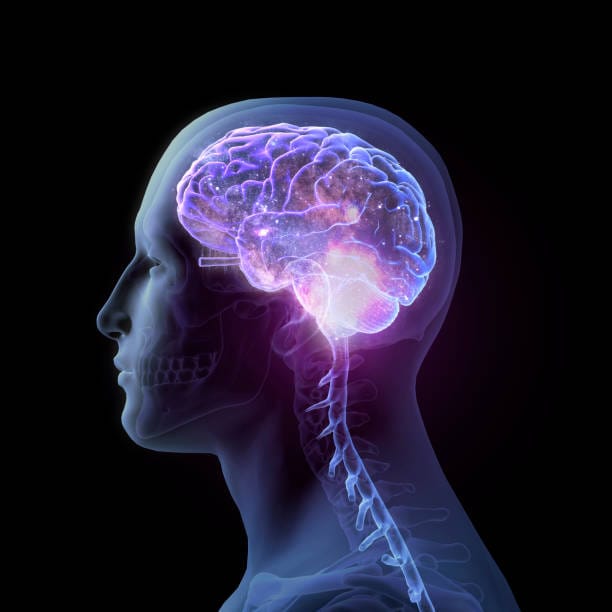Walk into any hospital, doctor’s office, or even your local pharmacy, and you’ll quickly realize that modern medicine speaks its own language. To the untrained ear, it can sound like a complex blend of Latin, Greek, and an alphabet soup of acronyms—bradycardia, dysphagia, MRI, COPD, CBC. For patients and curious minds alike, this terminology can be daunting, confusing, and at times overwhelming.
Yet, behind every seemingly complex word is a structure, a logic, a meaning. Medical terminology isn’t just jargon—it’s a highly organized language that tells stories about the human body, diseases, treatments, and outcomes. For anyone who wants to understand their own health better, communicate more effectively with doctors, or simply explore the fascinating realm of medicine, learning the basics of medical terminology is an invaluable skill.
This article provides an engaging, beginner-friendly glossary and conceptual guide to medical terms. We’ll explore the roots, prefixes, and suffixes that make up the foundation of medical language, examine terms by body system and function, and offer tips on how to decode complex vocabulary without a medical degree.
Whether you’re a student, a caregiver, or someone passionate about understanding how the body works, this guide is your map to the vast and vital world of medical terminology.
The Building Blocks of Medical Language
Medical terminology is like Lego: it’s constructed from smaller pieces that fit together in predictable ways. These pieces generally fall into three main categories: prefixes, roots, and suffixes.
Roots: The Core Meaning
A root is the fundamental part of a medical word. It typically refers to a body part or system. For instance, the root cardi means “heart,” neuro means “nerve,” and derm means “skin.” Most medical terms have at least one root, and many have more than one.
For example, in the term osteoarthritis:
- osteo = bone
- arthr = joint
- itis = inflammation
Put it together, and you get “inflammation of the bone and joint.”
Prefixes: The Beginning That Modifies
A prefix is placed at the beginning of a word to modify its meaning. It might describe location, number, time, or status. Common examples include:
- brady- = slow (e.g., bradycardia = slow heart rate)
- tachy- = fast (e.g., tachypnea = rapid breathing)
- hyper- = excessive or above (e.g., hypertension = high blood pressure)
- hypo- = below normal (e.g., hypoglycemia = low blood sugar)
Prefixes add precision and context to medical terms. Without them, a term’s meaning might be incomplete or entirely different.
Suffixes: The Ending That Explains
A suffix is added to the end of a word to indicate a procedure, condition, disorder, or disease. Suffixes often describe what’s happening to the body part indicated by the root.
Some examples:
- -itis = inflammation (e.g., gastritis = inflammation of the stomach)
- -ectomy = removal (e.g., appendectomy = removal of the appendix)
- -algia = pain (e.g., neuralgia = nerve pain)
- -oma = tumor or mass (e.g., melanoma = skin cancer from pigment cells)
By combining prefixes, roots, and suffixes, medical professionals create precise, descriptive terms that convey complex information succinctly.
How to Read and Decode Medical Terms
Understanding medical terms is less about memorizing them all and more about recognizing patterns. Here’s a simple strategy:
- Start with the suffix: This often tells you the type of condition or procedure.
- Identify the root(s): These reveal what part of the body is being discussed.
- Add the prefix (if present): This adds detail like number, location, or status.
Take the term hypoglycemia:
- Suffix: -emia = blood condition
- Root: glyc = sugar
- Prefix: hypo- = low
So hypoglycemia means “a condition of low sugar in the blood.”
Let’s try another: polyneuropathy
- Prefix: poly- = many
- Root: neur = nerve
- Suffix: -pathy = disease
Translation: “a disease affecting many nerves.”
This decoding method works like a charm across most of medical language.
Body Systems and Their Terms
Medical terminology often clusters around the body’s systems. Understanding each system’s key terms helps you make sense of medical documents, reports, and conversations.
Cardiovascular System
The cardiovascular system includes the heart (cardi) and blood vessels (vascul, angi). Some common terms:
- Hypertension: high blood pressure
- Myocardial infarction: heart attack (literally, “death of heart muscle tissue”)
- Arrhythmia: abnormal heart rhythm
- Atherosclerosis: hardening of arteries due to plaque buildup
This system is rich in terms that relate to blood flow, pressure, and electrical rhythm.
Respiratory System
Terms related to breathing and the lungs include:
- Pulmo or pneumo: lung
- Broncho: bronchial tubes
- Apnea: absence of breathing
- Dyspnea: difficult breathing
- Asthma: chronic inflammatory disease of airways
- COPD: Chronic Obstructive Pulmonary Disease
Understanding these terms can help interpret a chest X-ray report or understand a pulmonologist’s notes.
Digestive System
With a complex chain of organs from mouth to colon, the digestive system’s terms often seem long but logical.
- Gastroenteritis: inflammation of the stomach and intestines
- Colonoscopy: viewing the colon using a scope
- Hepatomegaly: enlarged liver
- Cholecystectomy: removal of the gallbladder
The root hepat means liver, chole means bile, and enter refers to intestines.
Nervous System
The nervous system includes the brain, spinal cord, and nerves.
- Neurology: the study of the nervous system
- Encephalopathy: disease of the brain
- Meningitis: inflammation of the meninges (protective membranes)
- Seizure: sudden surge of electrical activity in the brain
Neuro, encephalo, and myelo are roots to watch here.
Musculoskeletal System
Bones, joints, and muscles give rise to many of the most familiar medical terms.
- Arthritis: inflammation of joints
- Osteoporosis: loss of bone density
- Myalgia: muscle pain
- Tendinitis: inflammation of tendons
Injury-related terms like sprain, strain, and fracture also live in this system’s domain.
Endocrine System
Hormones rule this system. Common glands include:
- Thyroid: regulates metabolism
- Pancreas: regulates blood sugar
- Adrenal glands: produce stress hormones
Medical terms here include:
- Diabetes mellitus: disorder of blood sugar regulation
- Hypothyroidism: underactive thyroid
- Cushing’s syndrome: hormonal disorder due to high cortisol
Urinary System
This system filters blood and produces urine.
- Nephro or reno: kidney
- Cystitis: inflammation of the bladder
- Urethritis: inflammation of the urethra
- Hematuria: blood in urine
- Dialysis: artificial filtration of the blood (used in kidney failure)
Reproductive System
Men’s and women’s systems use different terms but often overlap:
- Gynecology: study of the female reproductive system
- Urology: study of urinary and male reproductive systems
- Hysterectomy: removal of the uterus
- Prostatitis: inflammation of the prostate gland
Terms like menopause, fertility, and contraception also live here.
Diagnostic and Procedural Terms
Medical terminology isn’t just about conditions—it also covers how we diagnose and treat them.
Imaging and Tests
- X-ray: uses radiation to view bones and dense tissues
- MRI: Magnetic Resonance Imaging for detailed soft tissue images
- CT scan: combines X-rays to produce cross-sectional images
- Ultrasound: uses sound waves to visualize internal organs
Test terms include:
- CBC: Complete Blood Count
- EKG (or ECG): Electrocardiogram, measures heart’s electrical activity
- Biopsy: removal of tissue for examination
Surgical and Treatment Terms
- -ectomy: surgical removal (e.g., mastectomy)
- -otomy: cutting into (e.g., tracheotomy)
- -plasty: surgical repair (e.g., angioplasty)
- -scopy: viewing with a scope (e.g., laparoscopy)
Other common terms:
- Chemotherapy: chemical treatment, often for cancer
- Radiotherapy: treatment with radiation
- Immunotherapy: boosting the immune system to fight disease
Medication Terms
Drugs also have terminology:
- Analgesic: pain reliever
- Antibiotic: kills or inhibits bacteria
- Antipyretic: reduces fever
- Antihypertensive: lowers blood pressure
Drug names often end in:
- -olol: beta blockers (e.g., propranolol)
- -pril: ACE inhibitors
- -statin: cholesterol-lowering drugs
Understanding suffixes can help you guess a drug’s function.
Abbreviations and Acronyms
Doctors and nurses often speak in acronyms:
- BP: blood pressure
- HR: heart rate
- DOB: date of birth
- Hx: history
- Rx: prescription
- Dx: diagnosis
- Tx: treatment
- Fx: fracture
These shortcuts speed up communication but can confuse outsiders. Once you know them, reading a medical chart becomes much easier.
Common Confusions and Misunderstood Terms
- Benign vs malignant: benign means not cancerous; malignant means cancerous and dangerous.
- Chronic vs acute: chronic means long-lasting; acute means sudden and severe.
- Relapse vs remission: relapse is return of disease; remission is a period without symptoms.
- Symptom vs sign: symptoms are felt by the patient; signs are observed by the doctor.
Understanding these distinctions helps in interpreting diagnoses and health news accurately.
Why Learning Medical Terminology Matters
Knowing medical terms isn’t just for doctors. It empowers patients to:
- Understand their health conditions better
- Navigate medical records with confidence
- Ask informed questions during doctor visits
- Avoid confusion or misinformation
For caregivers and students, this knowledge is essential for accuracy and empathy. For everyone else, it opens a window into the intricate machine that is the human body.
Tips for Learning Medical Terms
- Break down words into parts—learn roots, prefixes, and suffixes.
- Use flashcards or apps like Quizlet.
- Practice in context—read real case studies or medical reports.
- Use visuals—anatomy charts help link terms to organs.
- Repeat often—repetition is key to mastering any new language.
Conclusion: Making the Complex Clear
Medical terminology may seem like a tangled web of alien words, but at its heart, it’s a precise, logical, and beautiful language. It captures the workings of the body, the names of our ailments, and the paths to healing with clarity and elegance.
For beginners, learning this language is like acquiring the keys to a hidden kingdom—a place where science, life, and care converge. Whether you aim to become a healthcare professional or simply want to understand your own health better, medical terminology is not an obstacle. It’s an invitation.
An invitation to know more. To fear less. And to speak the language of life itself.






